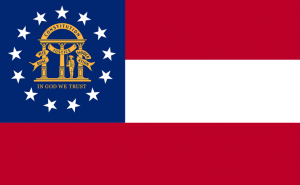

You’ve seen the Colorado state flag. You might even have a pair of sunglasses from Music Fest that carefully places the flag pattern across your face. But what does the flag say about Colorado? Originally designed by Andrew Carlisle Johnson and adopted by the Colorado General Assembly in 1911, most of the flag features are meant to represent geographical features of the state. The golden circle represents our ample sunshine, the middle white stripe represents our snow-capped mountains, the blue stripes imitate clear blue skies and the red “C” is colored for our namesake, the red rocks of Colorado (“colored red”).
If you didn’t know what each part of the design meant when looking at the flag, would you be able to guess at its meaning? Maybe, like the United States flag, the colors have a political or historical, rather than geographical, meaning. If you never knew what Colorado is like, geographically or otherwise, the flag would likely have even less meaning. A complete outsider might even guess that the flag has religious meaning, like the flag of Israel.
Clearly, flags may visually represent different aspects of a state or country, but what else can flags convey? Colorado’s flag, for example, is one of the best state flags as far as design goes. A survey by the North American Vexillological Association (NAVA) ranked American and Canadian state and provincial flags based on design, meaning, simplicity and uniqueness. In this survey, Colorado’s flag ranked 12th out of American state flags with a score of 6.83. For the record, the highest score for American flags was 8.61 for New Mexico, while Georgia captured the lowest score of 2.36. It seems to make sense. Colorado is a cool state, so it deserves a cool flag. It’s also possible that it’s a coincidence.
Let’s find out. Using the scores of American state flags in the NAVA survey and a completely subjective ranking of American states performed by Thrillist, I calculated the correlation coefficient between cool factor of state flags and their actual state. Turns out, there is virtually no correlation whatsoever. Even when compared to state GDP per capita and the year each state joined the union, state flag design and appeal has little to no relation to what a state represents economically or historically.

Although there isn’t any correlation between state flag appeal and cool factor, GDP per capita or date of entrance to the union, it isn’t to say that state flags have no meaning. Georgia’s former flag, which had the lowest ranking on the NAVA survey, still represented its history in the Confederacy and United States, even if it lacked in uniqueness (13 stars that represent 13 colonies outside its state seal) and appeal (the small flags and writing are near impossible to see from a distance).

Flags have meaning and, once studied, represent various aspects of a state or country. However, the NAVA survey could be a wakeup call for many states. Georgia ended up changing its flag design in 2003 to increase appeal while maintaining the historical meaning of the original flag. My home state of Minnesota, however, maintains a relatively unoriginal and unappealing flag, despite controversy over its content.
In addition, the recent controversy over the Confederate flag in South Carolina is one example of how representations of history can be touted in ways that offend and upset. The Nazi flag would be another example. Considering how arbitrary design is, it would be easy to create a new flag with positive historical significance to replace controversial flags. For flags with little appeal, there are few reasons to incorporate existing meaning into a new design.

In fact, one designer created new flags for every state in attempts to increase cohesion across the designs, while maintaining significance and unique designs. Increased symbolic cohesion is just one way to stimulate actual cohesion between states and rid ourselves of old norms that have caused so much controversy and offense. Of course, a universal change in flag design wouldn’t solve all the problems between states, but it would certainly cause a change in perspective for some and even create a much-needed discussion in the role of states in our nation.
This time, a look through your Colorado flag sunglasses might give you a glimpse into the meaning of flags across the world, but it also hits home. In reality, flag meaning and importance is subjective, so why not give a new design a chance if there’s reason to? In Colorado, though, we can rock a cool flag for a cool state.











